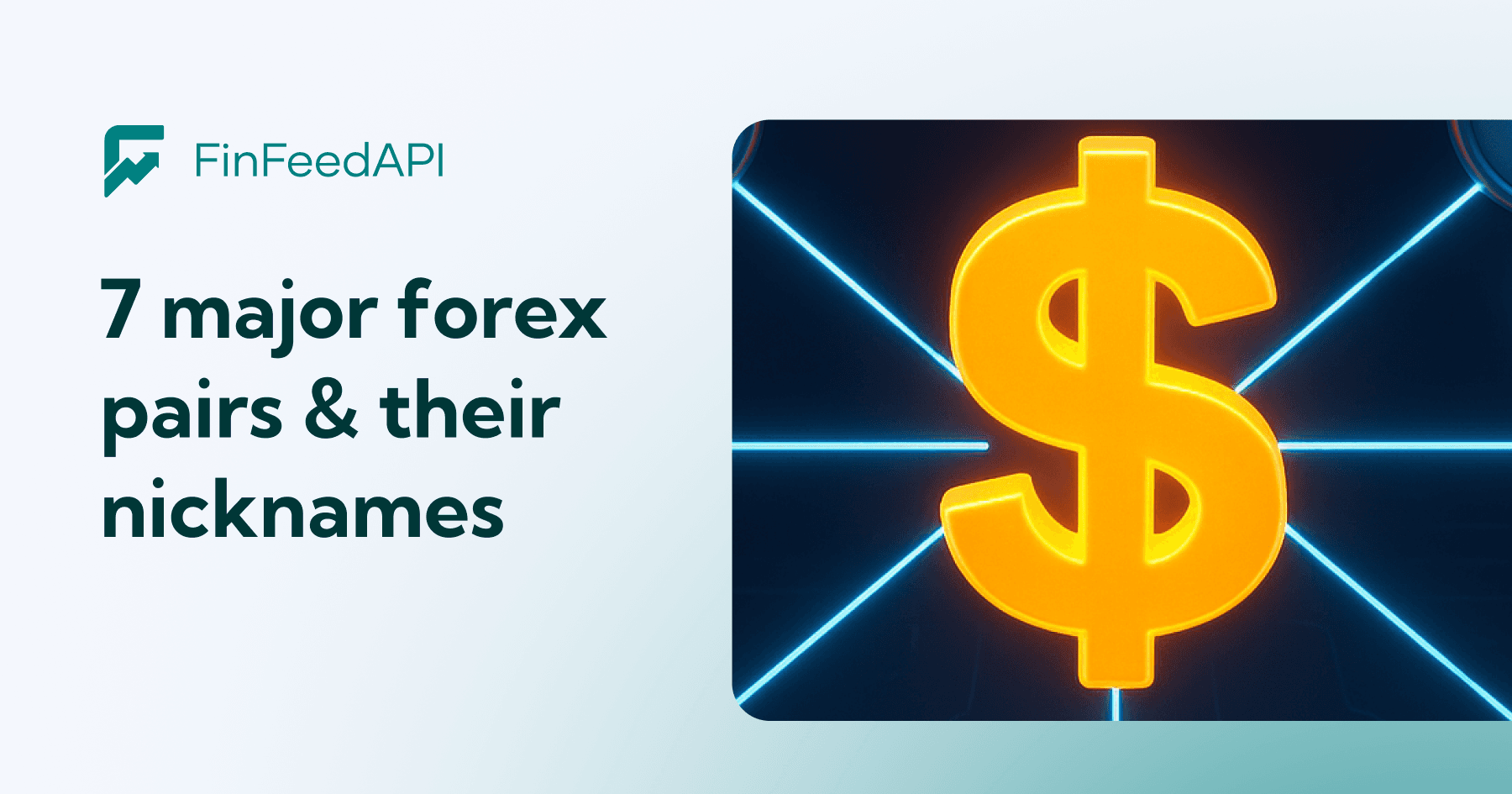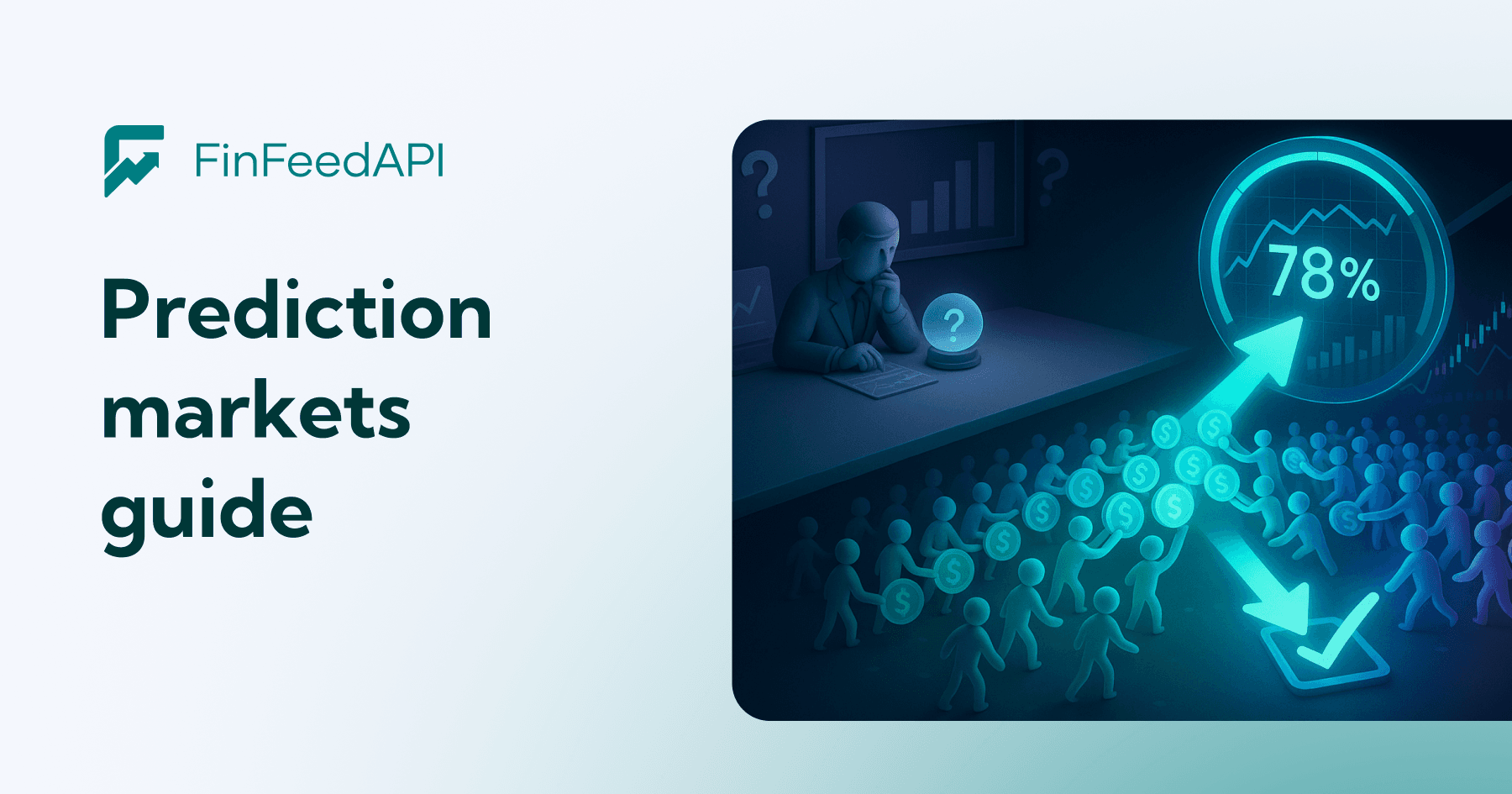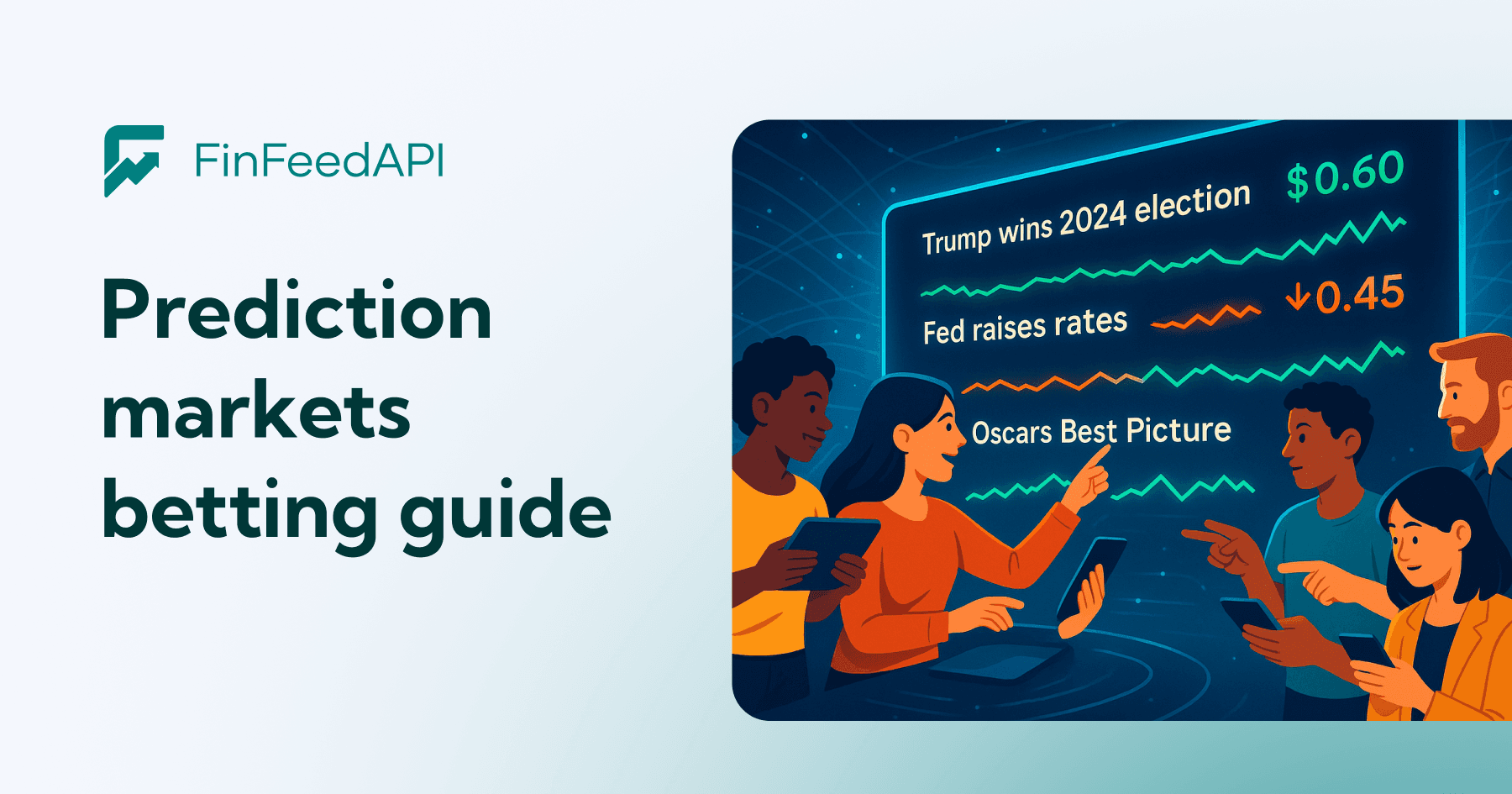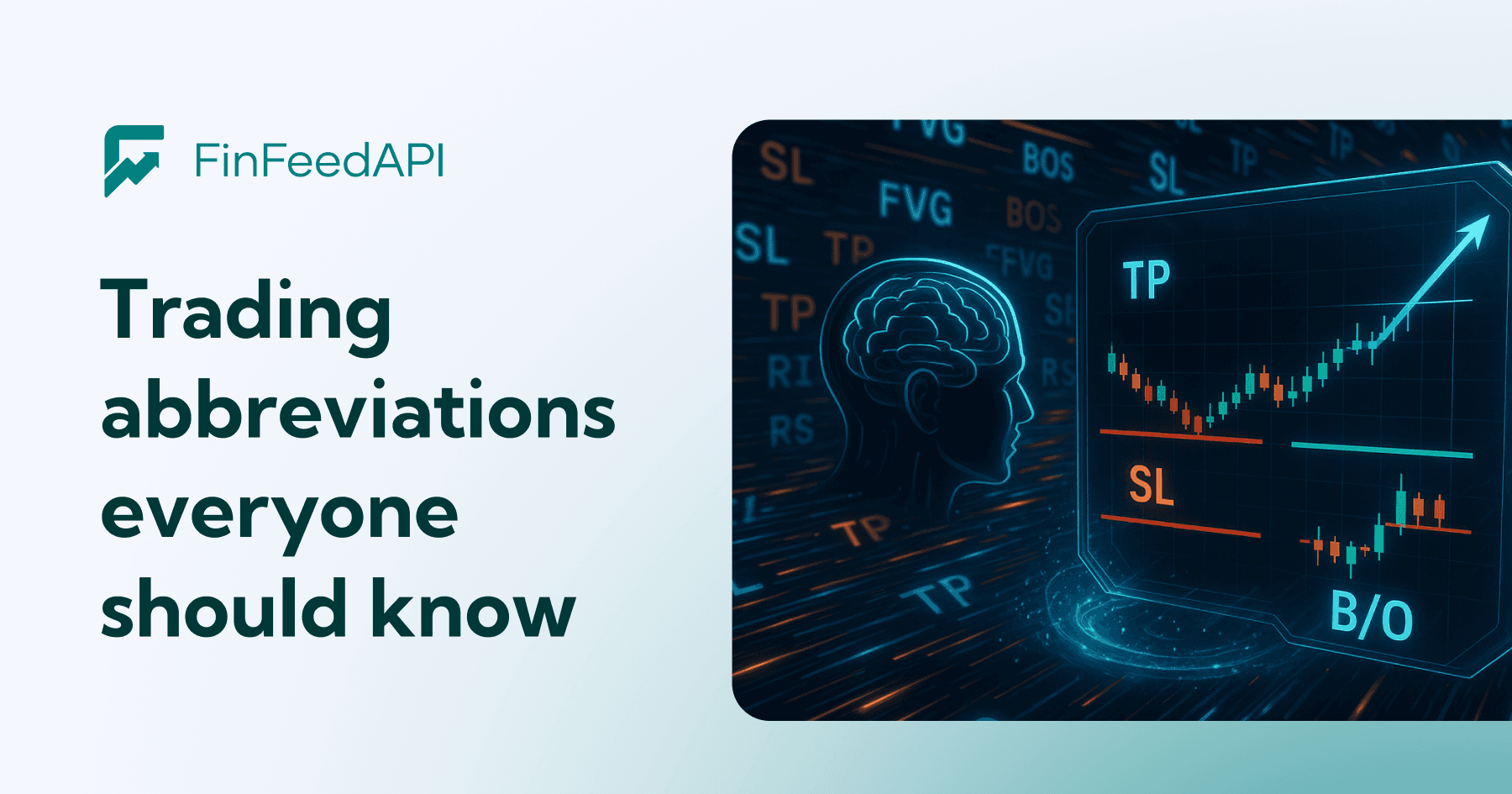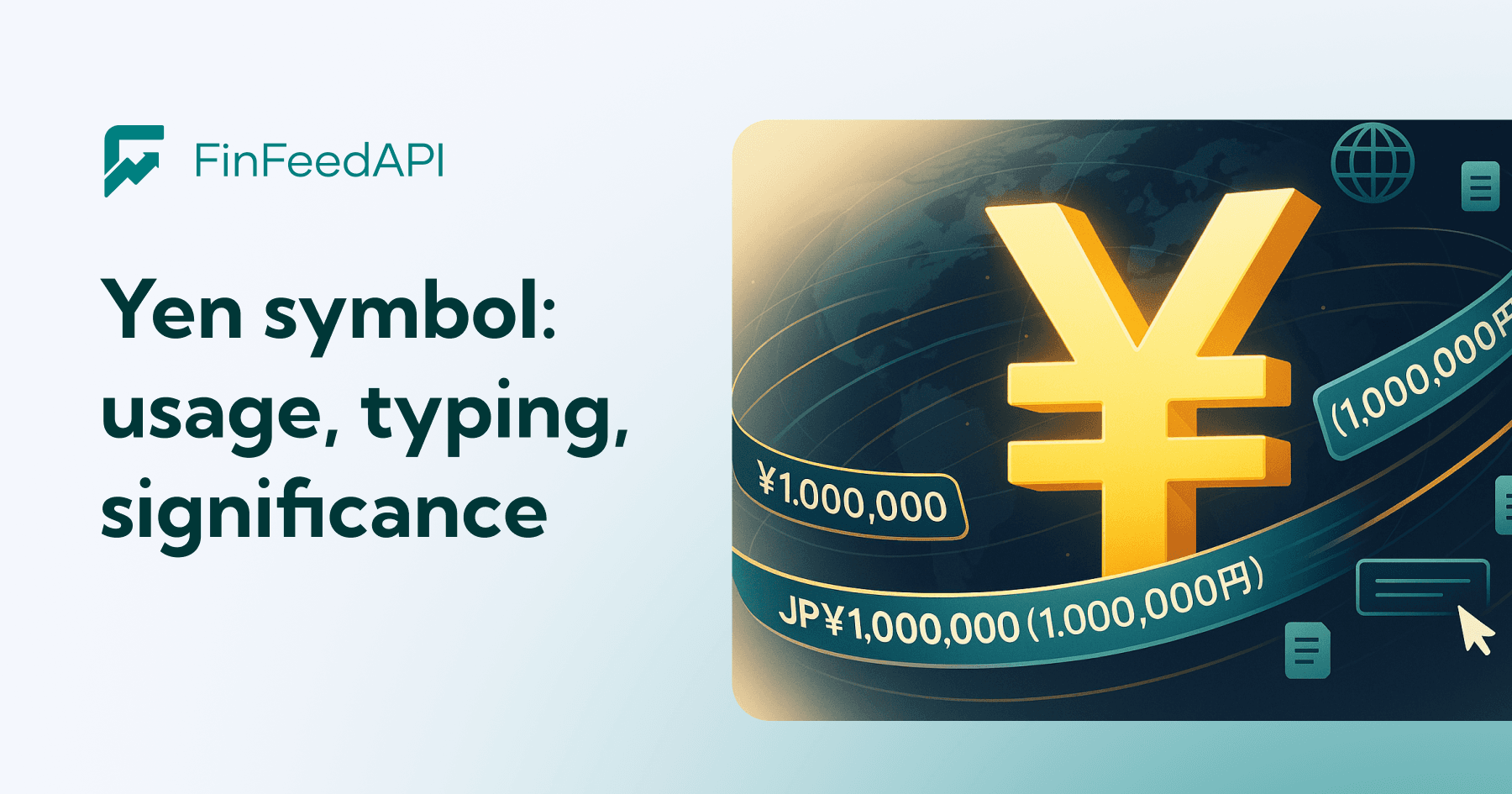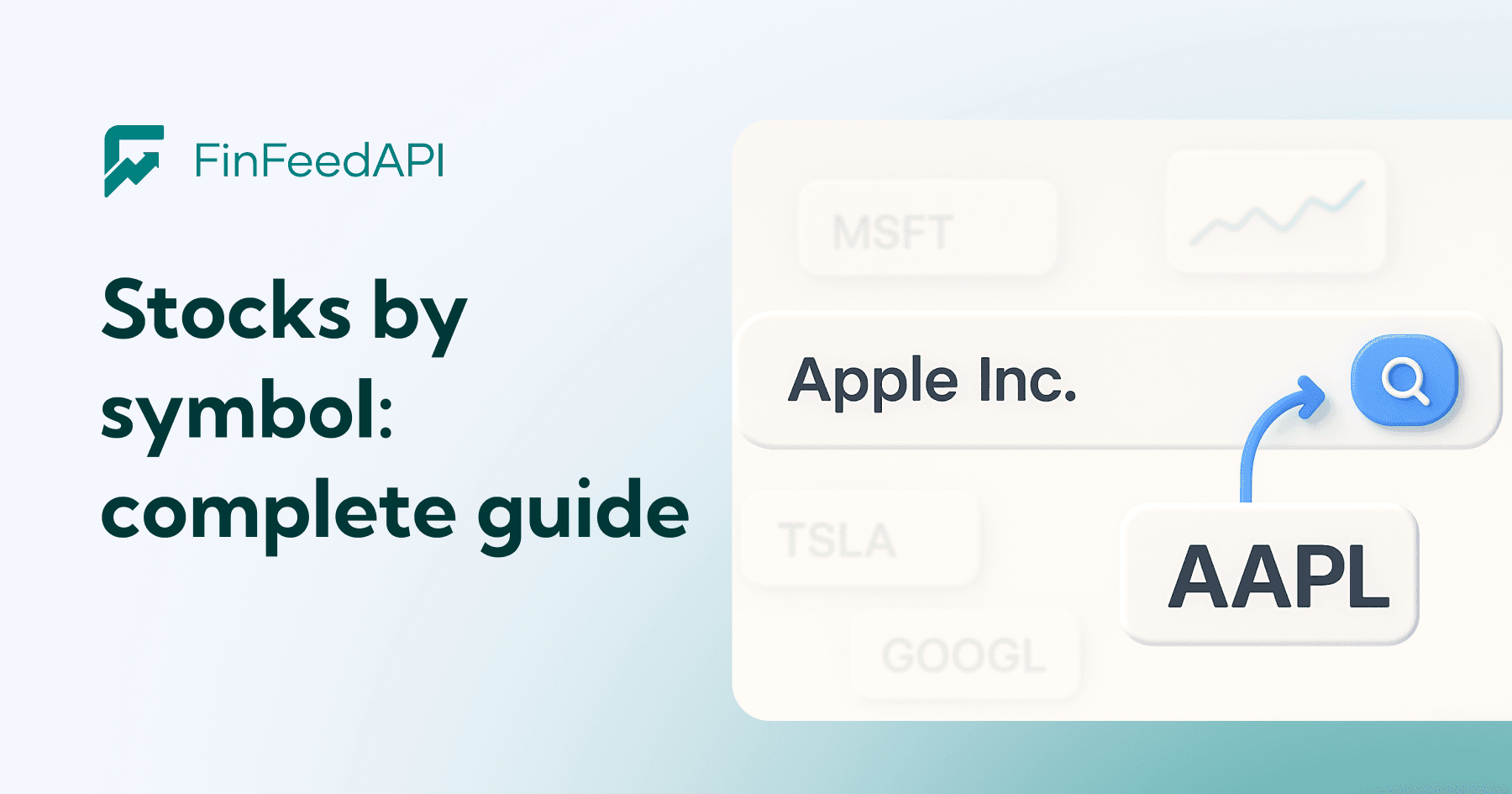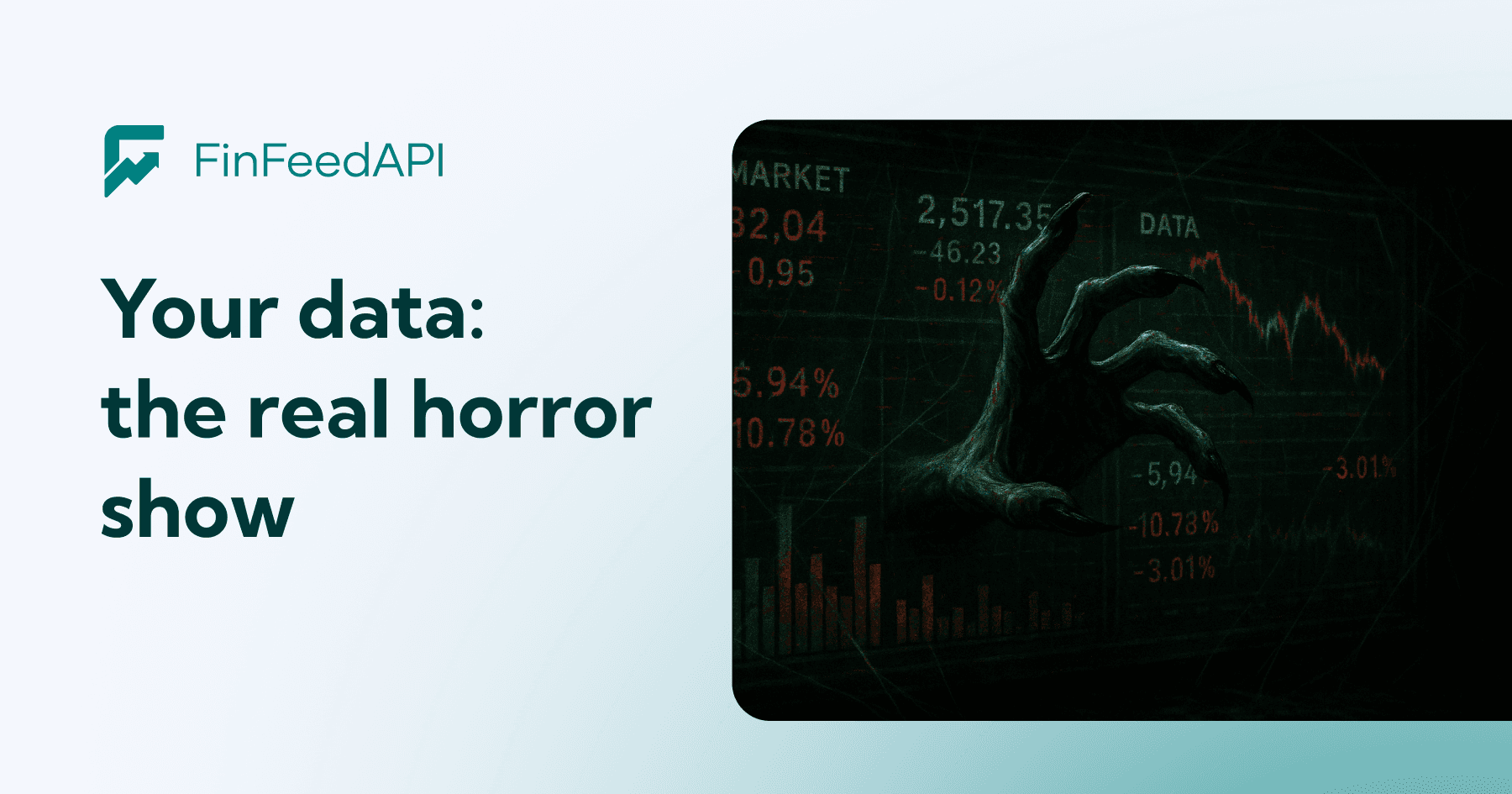Every day, billions of dollars move across global markets — all guided by a few simple letters.
AAPL. TSLA. AMZN. META.
They’re tiny, but they carry weight. In the language of finance, these are ticker symbols — the universal code that connects traders, algorithms, and investors around the world.
Understanding them isn’t just for professionals anymore. Whether you’re day trading or just curious about the markets, knowing how to look up stocks by symbol opens the door to smarter investing.
What Are Stock Symbols — and Why Do They Exist?
A stock symbol (or ticker symbol) is a short abbreviation used to identify a publicly traded company on a specific exchange.
It’s the stock market’s version of a passport — unique, standardized, and essential.
Type AAPL into your brokerage app, and you’ll instantly see Apple’s price, charts, and financials. Type TSLA, and you’re looking at Tesla.
Without these codes, trading systems couldn’t process orders, financial news would be unreadable, and the markets would grind to a halt.
The idea dates back to 1867, when the ticker tape machine revolutionized how prices were shared. It printed abbreviated stock names and prices on narrow strips of paper — tick, tick, tick — across telegraph lines.
Space was limited, so symbols had to be short. One letter for Ford (F), one for AT&T (T). Those abbreviations became a financial language — fast, efficient, universal.
Today, that same concept powers modern electronic trading. The only difference?
Ticker tape is gone; algorithms now “read” the symbols instead of humans.
How to Look Up Stocks by Symbol
Finding a stock by its ticker isn’t a secret handshake anymore — it’s something anyone can do in seconds.
Still, the way you search can reveal how deep you want to go: quick price check or full-blown analysis.
Let’s explore the four main ways investors, traders, and even developers look up stocks — and what makes each one useful.
1. Financial Websites
Start simple.
Sites like Yahoo Finance, Google Finance, and Bloomberg are the front doors to market data.
Type AAPL into the search bar and the world of Apple opens up — price, chart, financials, and headlines, all in real time.
Don’t know the ticker yet? No problem. Just type “Apple” and you’ll get AAPL instantly.
These sites are perfect for quick research, pre-trade checks, or keeping an eye on multiple companies without logging into a brokerage account.
2. Broker Platform Tools
If you’re using TD Ameritrade, E*TRADE, or Fidelity, you already have a built-in advantage: direct market access.
Broker dashboards let you look up any ticker and see far more than a quote.
You get live prices, analyst ratings, earnings reports, and options data — all streaming in real time.
No delays, no fluff — just the pure, current market pulse.
This is where serious traders live because even a few seconds of delay can make all the difference.
3. Mobile Apps
Not everyone sits behind a trading screen. For most people, the market lives on their phone — in apps like Robinhood, Webull, or MarketWatch.
Add MSFT, NVDA, or TSLA to your watchlist, and you’ll get push notifications the moment something moves.
A product launch? An earnings call? You’ll know before the news hits TV.
These apps turn ticker symbols into tiny lifelines — connecting you to the market wherever you are.
4. APIs for Developers
Then there’s the next level — where data becomes power.
If you’re a developer or fintech builder, APIs are your best friend.
Services like FinFeedAPI let you pull stock data by symbol directly into your app, bot, or trading model.
It’s the same heartbeat the pros use — only now, you can plug it into your own systems.
Instead of checking prices, you can build tools that react to them.
Understanding Symbol Systems Across Global Exchanges
The idea of ticker symbols began in 19th-century America, but it didn’t stay there. As markets globalized, each region reshaped the system to fit its own language, technology, and rhythm.
Today, those few letters (or numbers) reveal more than price — they hint at where a company comes from and how its market evolved.
It all started in New York. At the beginning, every character mattered, so the most established companies claimed the shortest codes.
Those one-letter tickers became a badge of prestige — a symbol of longevity and trust.
Then came NASDAQ, born in the computer age. With technology companies flooding the market, it adopted longer, four-letter identifiers that mirrored a new generation of digital businesses and the data-driven era they created.
Cross the Atlantic, and you’ll find a different logic.
European exchanges favor tickers that resemble the company’s name — HSBA for HSBC, SHEL for Shell, VOD for Vodafone. It’s a system built for clarity and cross-border familiarity, ensuring that investors from Frankfurt to London instantly know what they’re looking at.
In Asia, the language of markets became numbers.
On exchanges like Hong Kong and Shanghai, companies trade under identifiers such as 700 (Tencent), 9988 (Alibaba), and 5 (HSBC Hong Kong).
The reason is simple — numbers cut through translation barriers.
In regions where Chinese, English, and other scripts overlap, digits are the universal alphabet.
Meanwhile, Canada and Australia took a hybrid path. Their tickers look familiar — letter-based like the U.S. — but often carry suffixes to mark the exchange: .TO for Toronto.AX for Sydney.
It’s a small but powerful signal for global investors who need to tell identical tickers apart at a glance.
Different systems, one purpose: order. From single letters to numerical codes, ticker symbols evolved to make global trade readable, searchable, and instantaneous.
Symbol Extensions: The Fine Print That Matters
Those extra dots and letters at the end of ticker symbols — BRK.A, BRK.B, GOOG, GOOGL — aren’t random. They’re part of a quiet labeling system that tells investors exactly what kind of stock they’re looking at.
When a company issues multiple classes of shares, those extensions help separate them.
Berkshire Hathaway’s BRK.A shares come with full voting power (and a hefty price tag), while BRK.B shares trade at a lower cost but offer limited control.
Same company, different influence.
A “P” usually signals preferred stock, a class that pays steady dividends and gets priority in line if things go south.
A “W” or “R” marks warrants or rights — contracts giving holders the option to buy stock later, often at a set price.
And an “F” quietly flags a foreign listing — companies trading in the U.S. through depositary shares or cross-listings.
These small suffixes might seem technical, but they matter. They define ownership rights, dividend priority, and even the kind of instrument you’re holding.
In a marketplace built on symbols, that tiny extra character can change the entire meaning
When Companies Change Their Symbols — and Why
Ticker symbols don’t stay still — they grow, adapt, and rebrand right alongside the companies they represent.
Sometimes the change is cosmetic. Sometimes, it marks a turning point.
When Facebook reinvented itself as Meta, it dropped its old “FB” ticker and adopted META — a clear statement that its ambitions now reached beyond social media.
When Exxon and Mobil merged, their new symbol, XOM, became shorthand for one of the largest energy giants in history.
And when Google reorganized under Alphabet, it split into GOOG and GOOGL, reflecting two share classes — one with voting rights, one without.
But not every change makes headlines. Companies switch tickers for quieter reasons too — moving to a new exchange, merging subsidiaries, or modernizing an outdated code that no longer fits their brand.
If the stock you hold changes its symbol, don’t panic.
Your shares don’t vanish or reset — they simply take on the company’s new nameplate.
Behind the fresh letters, your ownership and value stay exactly the same.
In an age of algorithms and automated trades, ticker symbols might seem old-fashioned — relics of a paper-tape past. But they’re more relevant than ever. Every trade, every alert, every data feed still runs through these codes. They’re the one element of the market that hasn’t changed, even as everything else became digital. The ticker is still how the world talks money.
FAQ: Common Questions About Stock Symbols
Can two companies share the same ticker?
Not on the same exchange. But yes, identical tickers can exist across markets — like RY on NYSE (Royal Bank of Canada) and RY on TSX for a different entity.
What happens if a company changes its symbol?
Your shares automatically update. It’s an administrative change — your ownership and share value stay the same.
How often do ticker symbols change?
Not very often — usually only when a company rebrands, merges, or moves exchanges. Major U.S. companies might keep the same ticker for decades, which is why short, iconic ones like “T” or “F” carry prestige.
Why do some symbols have dots or extra letters?
Those indicate share classes or special features: P for preferred stock, W for warrants, A/B for voting rights.
How long does it take for new tickers to appear?
Usually within 1–2 business days post-IPO. Premium data feeds update almost instantly.
Can I trade using just the ticker?
Yes — it’s the standard method. But always verify the exchange and company to avoid confusion between similar symbols.
What’s the difference between a stock symbol and an ISIN?
A stock symbol identifies a company on a specific exchange, while an ISIN (International Securities Identification Number) tracks that security globally. Think of the symbol as a local name and the ISIN as its international passport.
The Bottom Line
From ticker tape to APIs, the way we track markets has changed beyond recognition — but the code at its core remains the same.
Those few letters — AAPL, TSLA, AMZN — are more than identifiers. They’re a living language of finance, translating human ambition into market motion.
And if you want to speak that language fluently, data is your dictionary.
FinFeedAPI gives you that access — the bridge between symbol and insight.





